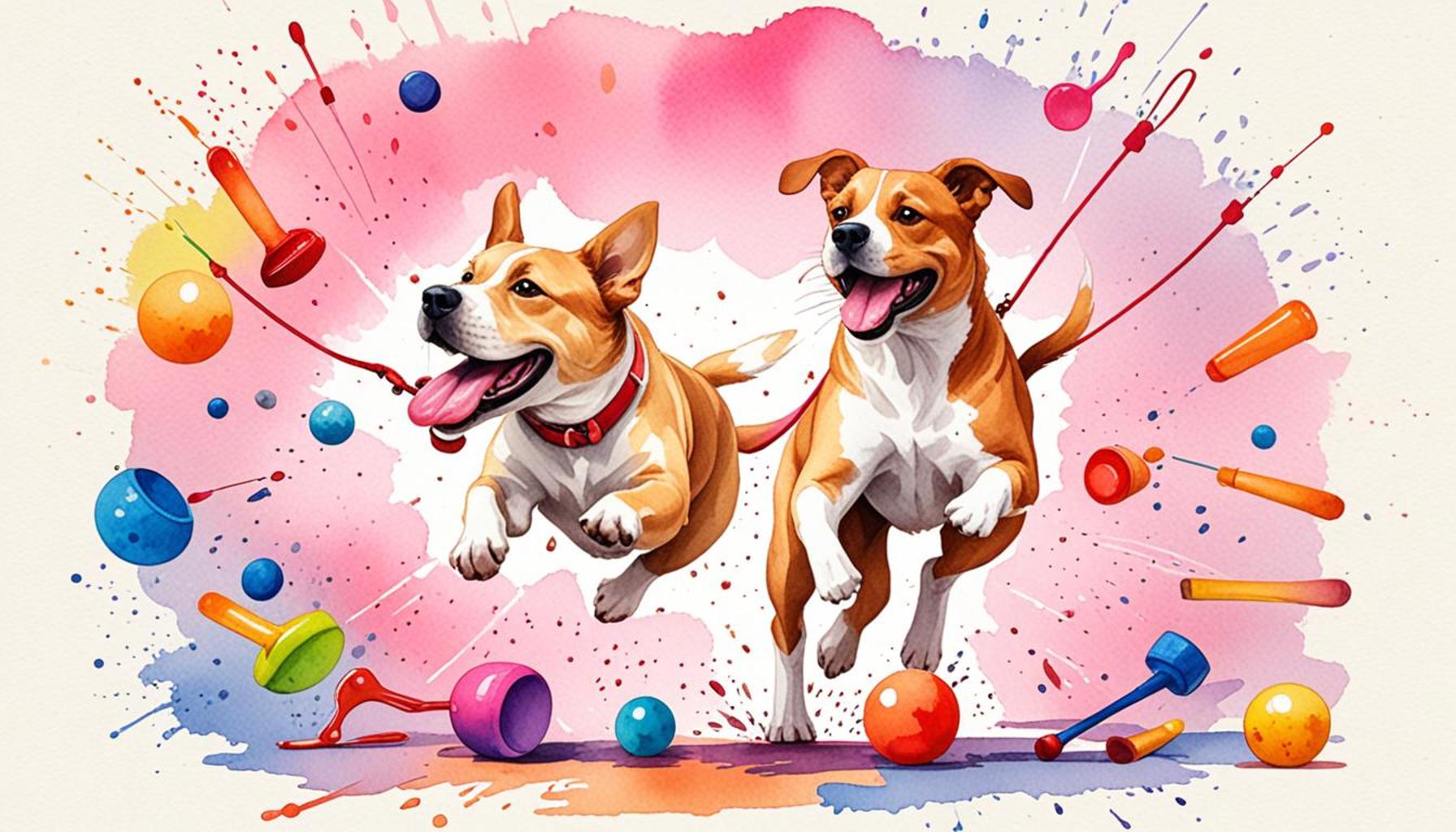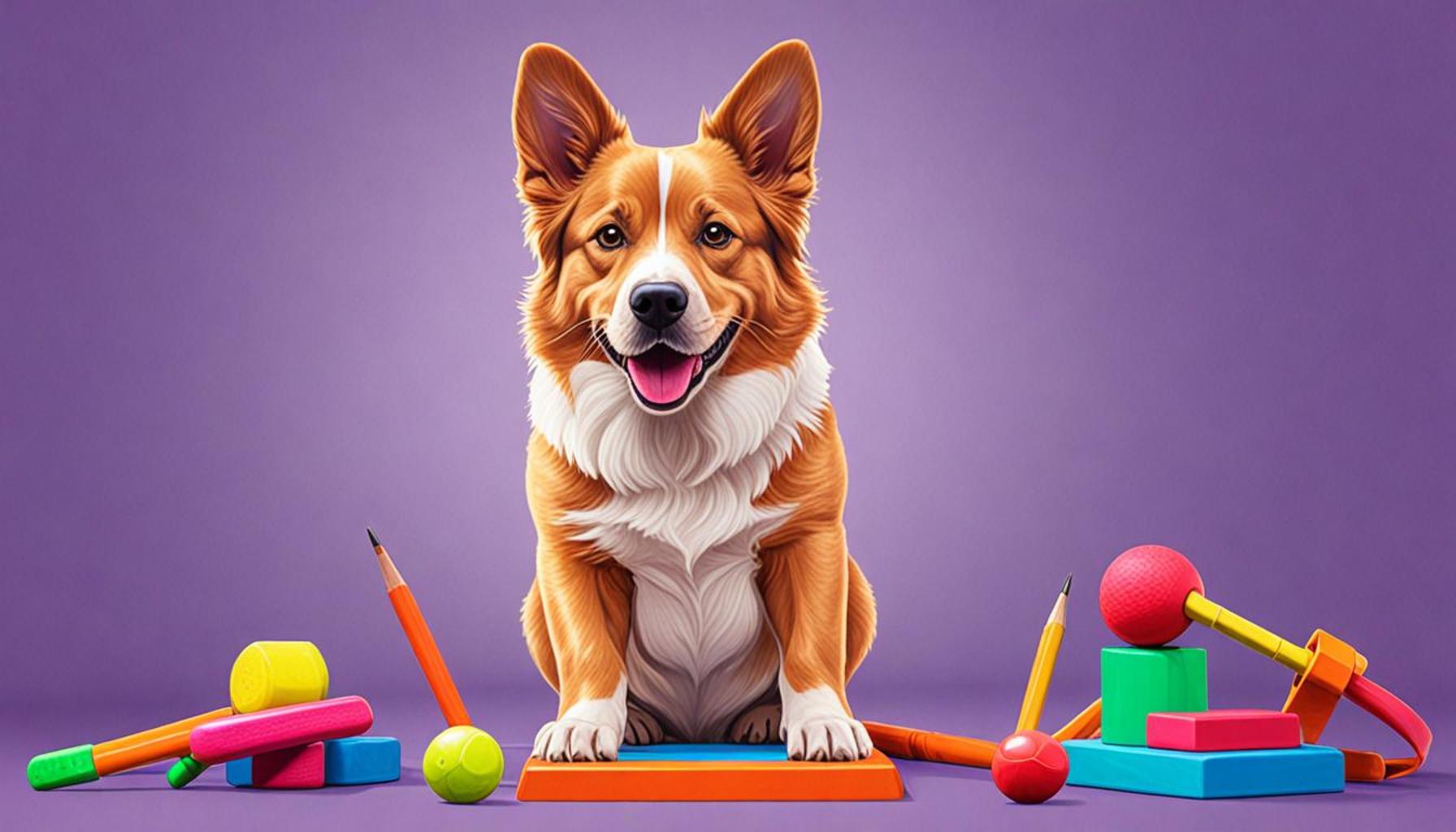Harnessing the Power of Play: Incorporating Fun into Dog Training Sessions

The Power of Play in Dog Training
For many dog owners, the thought of training their furry companions can feel intimidating, often conjuring images of inflexible commands and a serious atmosphere. However, infusing play into training has the potential to both invigorate the process and yield substantial benefits for both dogs and their humans. Transforming training sessions into enjoyable activities is not just an innovative strategy; it’s a gateway to improved learning and deeper connections.
Benefits of Playful Training
Improved Engagement: One of the most significant advantages of incorporating play into training is enhanced engagement. Dogs are naturally inclined to participate when the experience is enjoyable. For instance, games like fetch can be used not only as a way to exercise but also to teach commands like “come” or “drop it.” When a dog associates training with joy, they are more likely to respond positively.
Positive Reinforcement: Incorporating playtime as a reward reinforces desirable behaviors, strengthening the bond between pet and owner. For example, when a dog successfully follows a command, offering a moment of play can create a positive feedback loop that encourages them to repeat the behavior. This method contrasts sharply with traditional training models that rely solely on treats or corrective measures.
Increased Retention: Studies have shown that dogs trained in a playful environment tend to retain commands better than those subjected to conventional training methods. Learning through fun activities not only makes the experience memorable but also helps solidify the commands in the dog’s memory, ensuring they can recall them effectively in various situations.
Effective Strategies for Playful Training
Canine experts advocate for a plethora of games and strategies aimed at making training sessions both effective and enjoyable. Here are several practical approaches:
- Interactive Toys: Use puzzle toys that reward dogs with treats for solving challenges. This blends play with cognitive learning and encourages problem-solving skills.
- Agility Games: Setting up a simple obstacle course at home can be an exciting way to teach commands. For instance, navigating jumps and tunnels while obeying commands not only provides physical exercise but also reinforces mental acuity.
- Hide and Seek: This classic game is wonderful for practicing recall commands. Have your dog stay in one spot while you hide, then call them to find you. This not only reinforces the command but also allows for a playful and rewarding experience.
Conclusion
In conclusion, harnessing the power of play in dog training sessions can transform the experience into a delightful journey of learning. By utilizing engaging activities, dog owners can achieve improved engagement, foster stronger bonds through positive reinforcement, and enhance command retention. As you explore various training methods, remember that fun and interaction are key components to a successful and fulfilling training experience for both you and your canine companion.
DISCOVER MORE: Click here to learn how early socialization impacts your dog’s behavior
Maximizing Learning Through Play
When it comes to dog training, the traditional belief that discipline and seriousness are the keys to success is increasingly being challenged. Recent studies in animal behavior suggest that making training sessions enjoyable not only motivates dogs but can also lead to more effective learning. By redirecting the approach from one of mere obedience to one imbued with laughter and joy, owners can unlock their pets’ full potential.
Embracing the Natural Instincts of Dogs
Engagement and Motivation: Dogs are innately playful creatures. By harnessing this natural instinct, trainers can create an environment that promotes sustained interest and enthusiasm. Take, for instance, the use of a favorite ball or tug toy during training. Incorporating these items allows for a dual-purpose approach where play and training coalesce. It’s important to remember that dogs learn best when they are not only engaged but actively enjoying the process; everything from willingness to participate to enthusiasm can significantly improve training outcomes.
Socialization Through Fun: Incorporating games can also enhance social skills. Training sessions can serve as a platform for dogs to interact with their human companions and, if done in groups, with other dogs. Whether through cooperative games or competitive ones, playful activities can promote healthy social dynamics. Notably, activities such as “playdates” or classes that revolve around fun exercises can create an inviting atmosphere, where dogs learn not just commands but also the art of interacting harmoniously with others.
Practical Tips for Playful Training
Embracing play doesn’t necessitate complex setups or grandiose efforts. Here are some effective methods to seamlessly integrate fun into training:
- Fetch with a Twist: Use a game of fetch to reinforce commands like “stay” or “come.” Before throwing the ball, ask your dog to sit and wait, rewarding them with playtime when they obey.
- Training Treats with a Game: Hide treats around the house or yard and instruct your dog to find them. This not only sharpens their nose but reinforces commands as they search.
- Obstacle Course Fun: Set up a mini-obstacle course in your backyard or living room using household items. Encourage your dog to jump over cushions or weave through chairs, all while calling out commands that they will learn to associate with actions.
Through these strategies, training transforms into a playful and rewarding adventure, establishing a foundation for learning that engages both the mind and body of your canine companion. As both dogs and humans immerse themselves in enjoyable activities, the process not only solidifies skills but also strengthens the bond between pet and owner, demonstrating the transformative power of play in the training landscape.
| Advantage | Description |
|---|---|
| Improved Engagement | When fun is introduced into dog training, it becomes a highly engaging experience for both the dog and the trainer, fostering a stronger bond. |
| Increased Retention | Dogs are more likely to retain commands and tricks when training sessions are infused with playful elements, making learning enjoyable. |
Incorporating fun into dog training sessions transforms the entire dynamic between the trainer and canine. Improved engagement occurs when play becomes part of the curriculum. This involvement not only entertains the dog but also enriches the training experience, leading to a more profound connection. Additionally, studies have shown that dogs are more inclined to remember commands and behaviors taught in a playful environment. This retention is crucial for effective training, as it ultimately saves time and increases the dog’s overall responsiveness. When dogs view training as an engaging and enjoyable activity, they are more open to learning and adapting. For those looking to explore innovative methods of dog training that emphasize fun, consider incorporating play-based activities such as fetch or agility courses. Such strategies can greatly enhance the effectiveness of traditional training approaches, leading to a well-mannered companion who enjoys learning.
DISCOVER MORE: Click here to learn how pets benefit child development
Building a Lasting Bond Through Play
The synergy between play and training goes beyond mere obedience; it lays the groundwork for a deep-rooted bond between dogs and their humans. This connection is vital, as it fosters trust and respect, allowing for a relationship where both parties are eager to learn and grow together. Playful training approaches encourage a sense of team spirit, enhancing communication skills and emotional connections. Such interactions can lead to a more harmonious and cooperative household.
Understanding Dog Psychology
The Importance of Positive Reinforcement: Harnessing the principle of positive reinforcement during play can dramatically improve learning outcomes. Dogs thrive on the assurance that their efforts are acknowledged. When they associate a command with engagement and enjoyment, the likelihood of repeat performance increases. For example, utilizing a high-pitched “yes!” or an enthusiastic clap immediately after a dog successfully follows a command creates a positive feedback loop, reinforcing desirable behaviors.
Reducing Stress and Fear: Traditional training methods, often steeped in rigidity, can inadvertently induce stress in dogs. A fun-centered approach diminishes apprehension, facilitating a relaxed atmosphere conducive to learning. This is particularly crucial for timid dogs or those with previous negative experiences during training sessions. According to experts in animal behavior, a joyful environment encourages curiosity, turning potential fear into motivation. Games like ‘hide and seek’ not only stimulate a dog’s instinct to hunt but also diminish stress, making them more receptive to learning.
Incorporating Play into Routine Training
Integrating fun into everyday training doesn’t have to be an elaborate affair. Here are some additional straightforward strategies:
- Musical Sit: Play music during training sessions and teach your dog to sit when the music stops. This introduces an element of surprise and fun, blending obedience with entertainment.
- Agility Games with Friends: Coordinate group outings with other dog owners to create agility challenges in parks. This not only builds excitement for the dogs but also adds a social element that makes training less monotonous.
- Fun with Fetch Variations: Venturing beyond standard fetch, introduce variations such as rolling the ball to different distances, using multiple balls, or even incorporating obstacle elements between throws. This keeps the game fresh and invigorating, pushing dogs to think and react.
Embracing the concept of playful training not only fosters a spirited learning atmosphere but also enriches the dog’s life experience. The variety of experiences gained through engaging training exercises translates to more well-rounded, confident dogs. The joy found in these sessions forms the bedrock for lifelong learning and collaboration, pushing the boundaries of what can be achieved together.
Moreover, the atmosphere created through such playful engagement becomes a shared memory. As humans engage in fun activities with their dogs, both parties derive significant joy and fulfillment, reinforcing the idea that training does not have to be a chore but rather a delightful journey. Investing time in creative, fun-oriented training not only accelerates learning but also nurtures an everlasting relationship defined by respect, trust, and playfulness.
DISCOVER MORE: Click here to learn about essential pet nutrition
Conclusion
Incorporating fun into dog training sessions can profoundly transform the training experience for both dogs and their owners. The fusion of play and training nurtures a strong bond characterized by trust, respect, and mutual growth. As we’ve explored, embracing playful methods not only enhances learning through positive reinforcement but also significantly reduces stress for our furry companions. This relaxed atmosphere allows dogs to engage eagerly, turning potential anxiety into enthusiastic participation.
Moreover, simple yet effective strategies such as musical commands, agility games, and innovative fetch variations can invigorate routine training, making it more enjoyable and less monotonous. These activities encourage dogs to think critically while amplifying their confidence. The shared joy derived from engaging in playful training sessions creates fond memories that further solidify the relationship.
Ultimately, by shifting our perspective on training from a tedious task to a delightful adventure, we enable our dogs to thrive. Investing time into incorporating play not only accelerates learning but also fosters a lifelong partnership where both humans and dogs can enjoy a fulfilling and cooperative journey. To those considering a change in their training approach, the power of play is not just an option—it’s a pivotal aspect of developing a happy, obedient, and well-adjusted canine companion.
As you embark on this exciting training journey with your dog, remember that every moment of play is a step towards stronger learning and a deeper connection.


